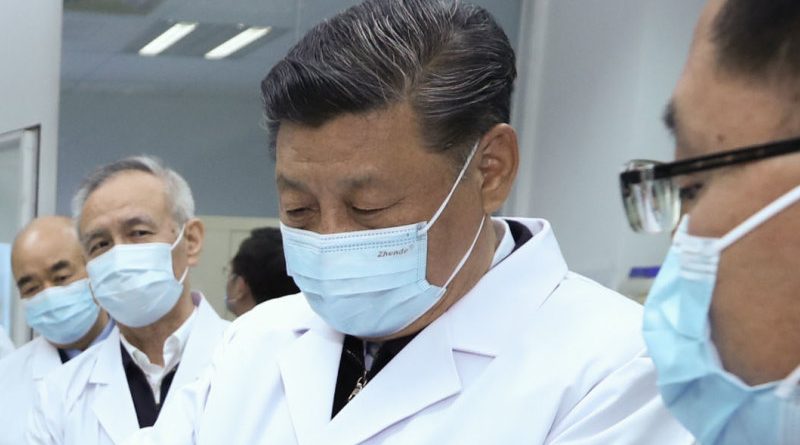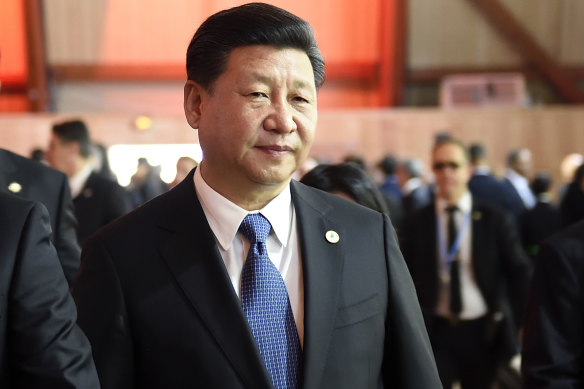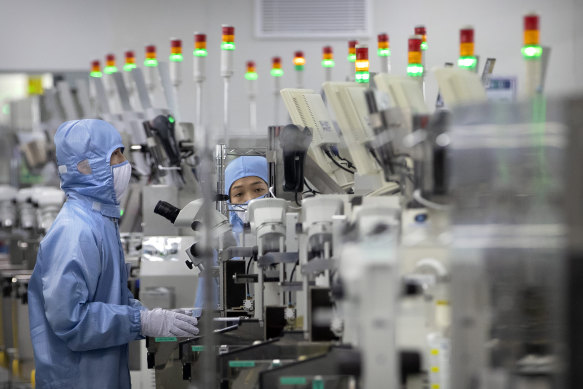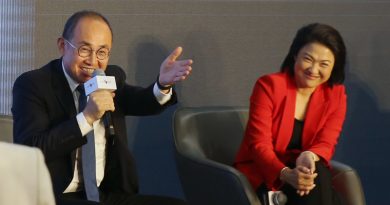Xi Jinping’s tech dream for China runs into a harsh reality
Wearing a laboratory coat, China’s top leader, Xi Jinping, inspected a subsidiary of Yangtze Memory Technologies Co., a national semiconductor company based in Wuhan, China. It was April 2018, shortly after the US government had barred the Chinese telecommunications firm ZTE from doing business with US suppliers.
The ban was a sputnik moment for China’s tech industry and its leaders. Despite the country’s success in building smartphones, e-commerce platforms and high-speed railways, they realised that tech boom had been built largely on top of Western technologies, especially chips that power nearly everything. They had to change that — and fast.
Xi Jinping is desperate for China to rapidly become self-sufficient in tech, but there have been many stumbles.Credit:AP
Xi told the executives of Yangtze Memory, or YMTC, that semiconductors were as important for manufacturing as hearts for humans. “When your heart isn’t strong, no matter how big you are, you’re not really strong,” state media reported him saying. He urged them to hurry and make tech breakthroughs to contribute to the rejuvenation of the Chinese nation.
Xi has repeated that message ever since, with growing urgency as the United States tries to restrict China’s access to key semiconductor technologies. But a series of corruption investigations last month into the who’s who of the country’s semiconductor industry suggest that Xi may not be getting what he expected, or at least not quickly enough.
Those under investigation include the former chair of YMTC who showed Xi around on the 2018 visit, and the head of a giant state fund, known as the Big Fund, which has invested in dozens of China’s biggest chip projects.
The firms they led are at the heart of the country’s push into semiconductors, the little slices of silicon that act as the brains of computers and other devices. Their downfalls are a public acknowledgment that China is rethinking its gold rush approach of throwing cash at projects in the hope that some work out. And it’s a clear setback for the country’s drive to become technologically self-sufficient.
Behind the purge lies a tension between Xi’s vision of government-led tech self-reliance and the very nature of semiconductors.
The chip industry is highly complex and interconnected. It depends on an integrated global supply chain and draws upon expertise from different regions: design in the United States; manufacturing in Taiwan and South Korea; assembly, packaging and testing in China; and equipment from the Netherlands. The comparative advantages of each region were built with decades of capital expenditure and research and development.
Charles Kau, a Taiwanese semiconductor veteran who has worked on both sides of the Taiwan Strait, said in a recent newspaper interview that he had tried telling mainland tech executives many times that it could take China 30 — or even 50 — years to become an industry leader.
Such statements aren’t likely to be what Xi wants to hear. Expected to secure a third term at an important Communist Party congress this year, he is increasingly obsessed with tech “choke points” that have left China vulnerable amid the trade war with the United States, including bans on companies like ZTE, the potential war over the Taiwan Strait and Russia’s invasion of Ukraine. This month, President Joe Biden signed into law a $US280 billion ($406 billion) bill aimed at strengthening domestic semiconductor manufacturing, design and research to compete with China.
China’s own chipmakers are making inroads but much of the headway has been in the lower end of the very long product chain in semiconductors, and gaps in more advanced market segments remain large and could take years or even decades to close.Credit:AP
To confront these challenges, Xi has increasingly reached back to Mao Zedong’s playbook when China was operating a planned economy and had few friends and self-reliance was a necessity. He doesn’t hide his fondness for the Mao era’s top-down approach to tackling big obstacles: mobilising national resources, which he claims is a big advantage of China’s state-dominating political system.
Such inward and backward vision has come to define Xi’s views on how China should advance to become self-sufficient in tech and how fast. He has promoted technocrats from the space and defence industries who pulled off technologically challenging projects that he believes testify to the strength of China’s system.
The purged semiconductor executives didn’t live up to that criterion.
Zhao Weiguo, the YMTC chair who stood behind Xi in a widely circulated photo of his 2018 visit, used to be the most high-profile person in the industry. He earned the nickname “semiconductor madman” after making a series of eye-popping investments in big chip projects through the company he controlled, Tsinghua Unigroup. He is best known in the West for his failed 2015 takeover of Micron Technology, a US maker of memory chips.
The other man under investigation, who is equally influential, is Ding Wenwu, head of the Big Fund, which became Beijing’s vehicle for doling out capital to chipmakers.
At least five other executives who worked with the two men are also under investigation on corruption allegations. So is Xiao Yaqing, minister of industry and information technology, who oversaw the sector, although it’s unclear whether the three sets of investigations are related.
The results of the Big Fund and Tsinghua Unigroup, which the Chinese government used to steer the development of the domestic chips industry, have been a mixed bag.
China’s chipmakers made more progress in the past five years than the previous decade, people in the industry said. In 2020, the country’s chip sales grew 30.6 per cent to reach $US39.8 billion, according to an analysis by the Semiconductor Industry Association, a trade organisation and lobbying group in Washington.
But much of the headway was in the lower end of the very long product chain in semiconductors, and gaps in more advanced market segments remain large and could take years or even decades to close. China still spends more on chips than on any other imported good.
And there have been failures despite — or because of — tonnes of government money and subsidies. In the first 10 months of 2020, more than 58,000 firms registered as chip-related enterprises, according to an analysis by China Economic Weekly, a magazine affiliated with the Communist Party’s official newspaper, People’s Daily. Some of the companies used to be in fashion, construction and other sectors, and changed their registration information only to gain access to easy money and cheap land, the magazine said. At least six semiconductor projects that boasted $US1 billion investments went bust.
Then there’s Zhao’s Tsinghua Unigroup, which started unravelling under a mountain of debt in late 2020. It was taken over this year by a Beijing-based firm, which was formed by a consortium led by investment companies, in a nearly $US9 billion deal.
Amid the chaos, the Big Fund, which has raised nearly $US50 billion since its inception in 2014, seemed to be performing well financially. Ding said in a 2017 interview that it needed to both serve the nation’s strategic goals and make a profit. But critics accused it of investing in safe bets instead of risky projects that could lose money for a while but eventually make a technological difference.
“If every city, every high-tech development district, every tech company and every researcher can follow the government’s guidance in tech innovation, we will definitely be able to achieve the goal.”
It’s not hard to imagine that Beijing looked at these results and found the performance underwhelming. There appeared to be too much greed and not enough patriotic dedication — the opposite of what Xi likes to see
Xi has repeatedly said he would like to see more achievements like the “two bombs and one satellite” of the 1960s and 1970s, when China developed its own nuclear and hydrogen bombs and first satellite despite poor economic conditions and a hostile international environment.
Since 2019, the phrase “new whole nation system” has also started appearing in Xi’s speeches and party documents in the context of conquering key tech challenges. The system is a relic from China’s planned-economy period between the 1950s and 1970s, during which the government mobilised and allocated resources through administrative command. The new whole nation system will combine the benefits of government command and market forces, many party theorists have argued.
China’s many recent successes in the space and defence projects are likely examples of what Xi believes the country can accomplish with the new whole nation system and the “two bombs and one satellite” spirit. In 2021, China landed a rover on Mars and sent astronauts to a new space station.
In a move that some believe hints at Xi’s thinking on semiconductors, in July he appointed the official who led the development of the first Chinese-built passenger jetliner to replace the minister of industry and information technology, who is under investigation.
Some critics have cautioned against a top-down approach in semiconductors because of the global complexity.
Liu Yadong, the former editor-in-chief of the official Science and Technology Daily, said in May that the whole nation system helped China win Olympic golden medals and build atomic bombs, “but it’s not fit for building semiconductor chips.”
Xi keeps pressing ahead. In June, he visited another semiconductor company in Wuhan. He stressed that tech self-reliance was the foundation of China’s prosperity and the key to national security.
“We must take the technology lifeline in our own hands,” he said. “If every city, every high-tech development district, every tech company and every researcher can follow the government’s guidance in tech innovation, we will definitely be able to achieve the goal.”
This article originally appeared in The New York Times.
The Business Briefing newsletter delivers major stories, exclusive coverage and expert opinion. Sign up to get it every weekday morning.
Most Viewed in Business
From our partners
Source: Read Full Article





